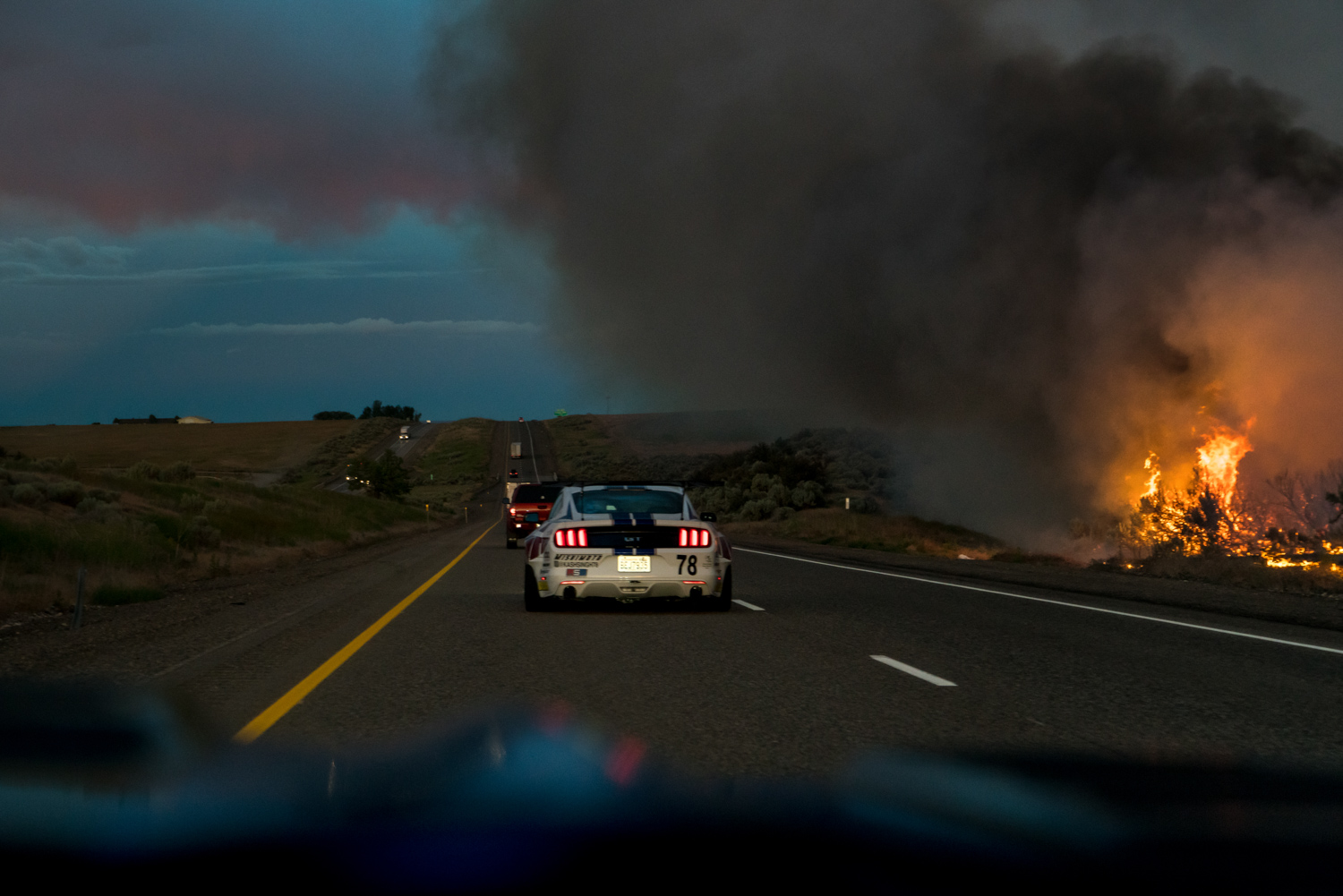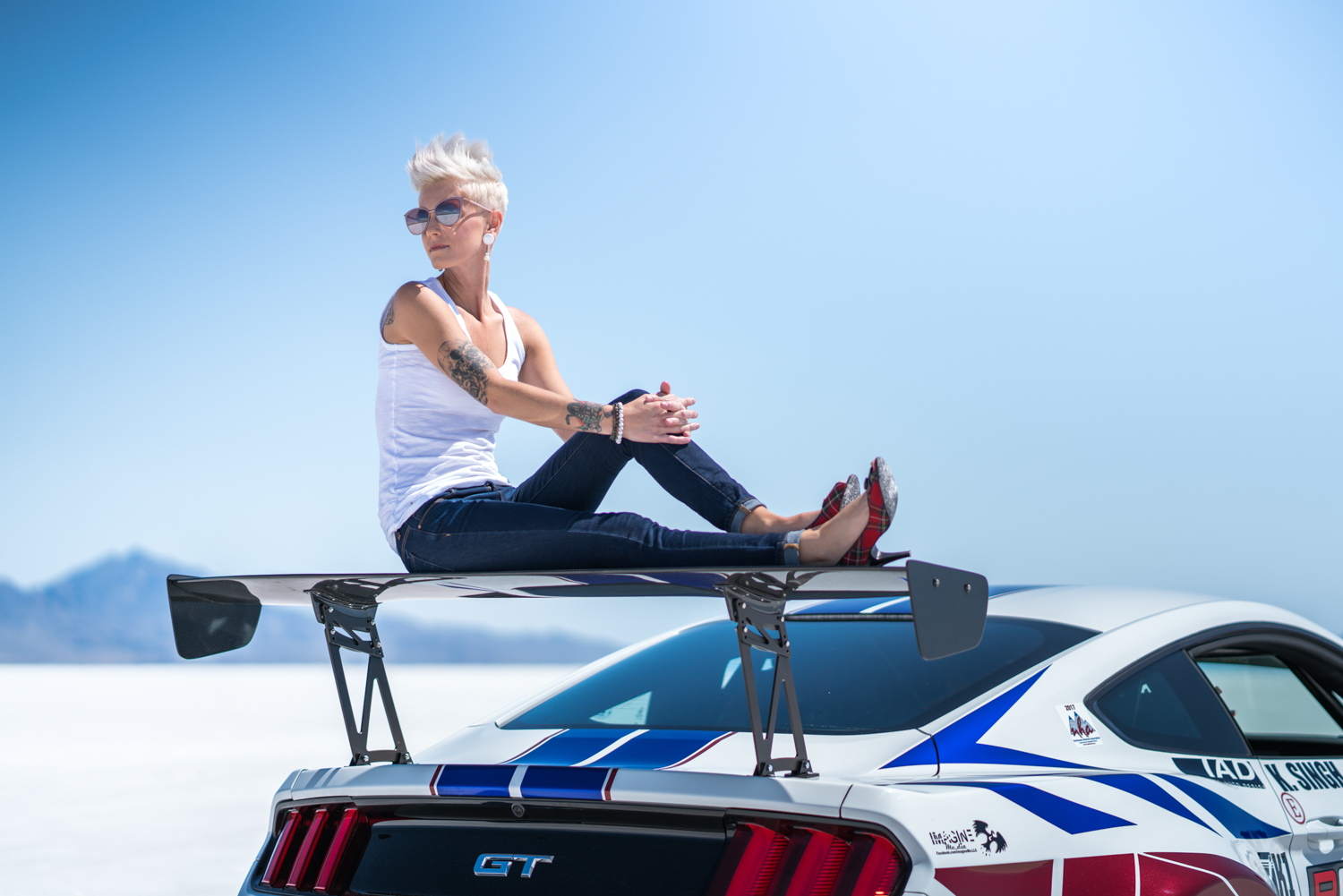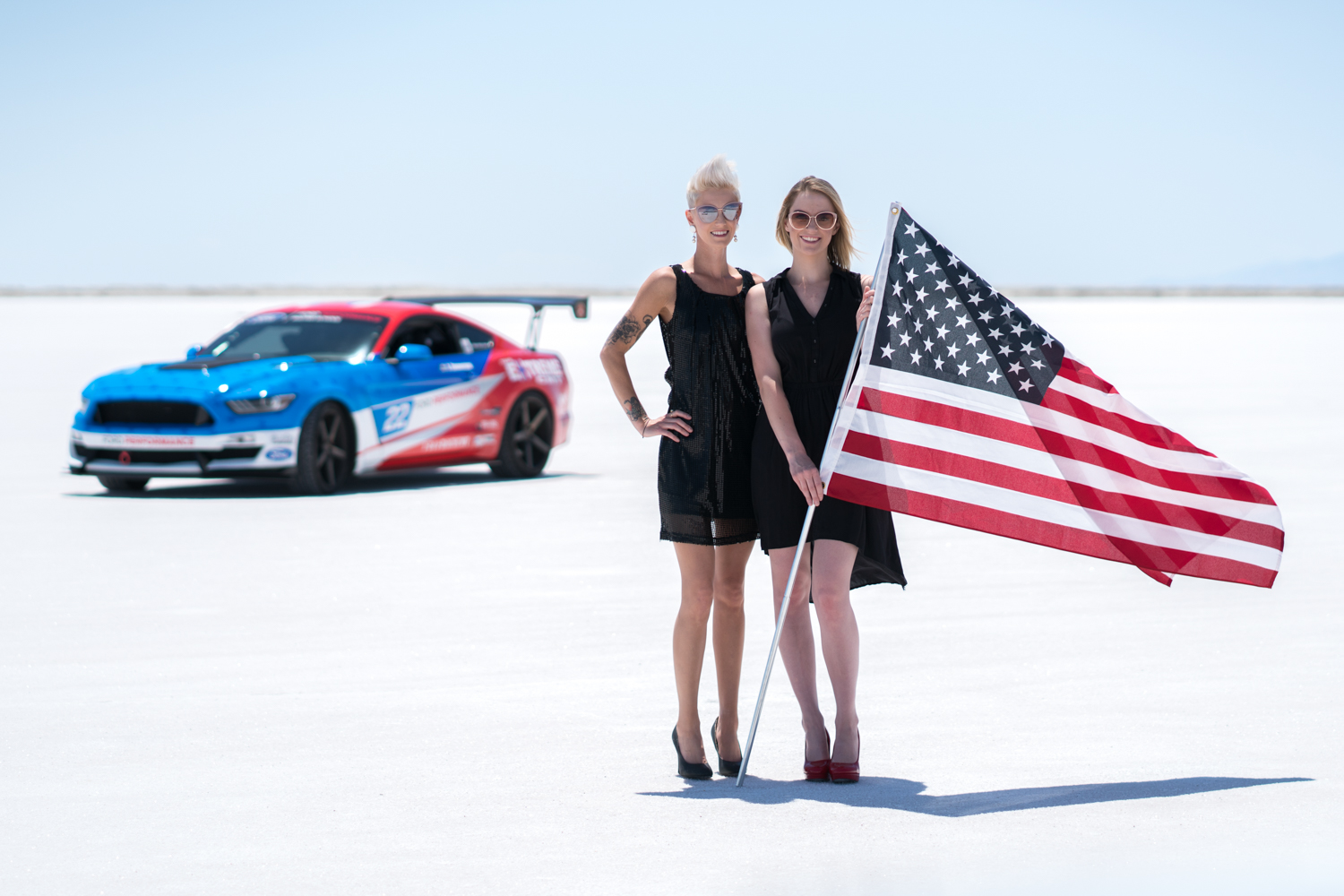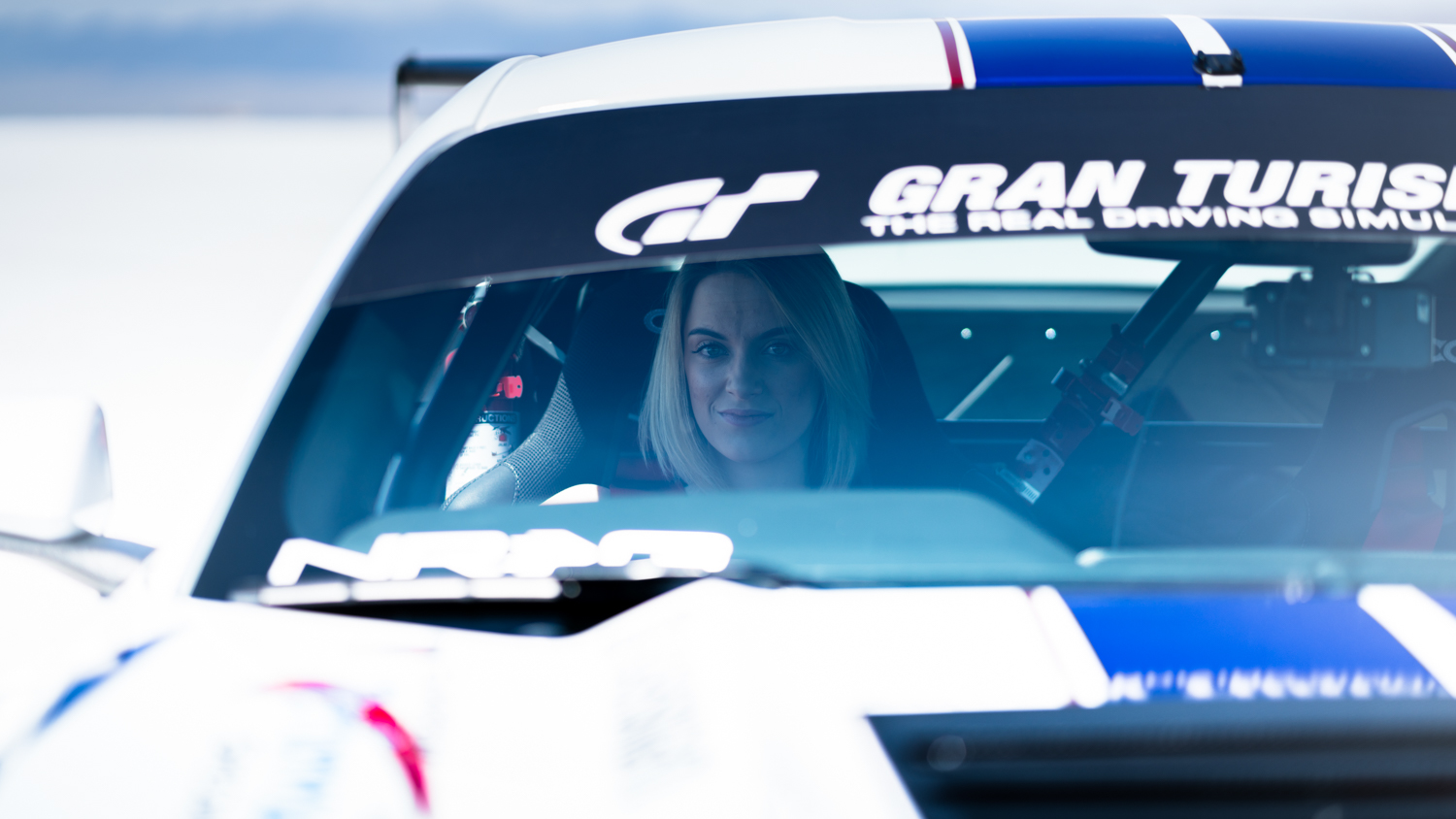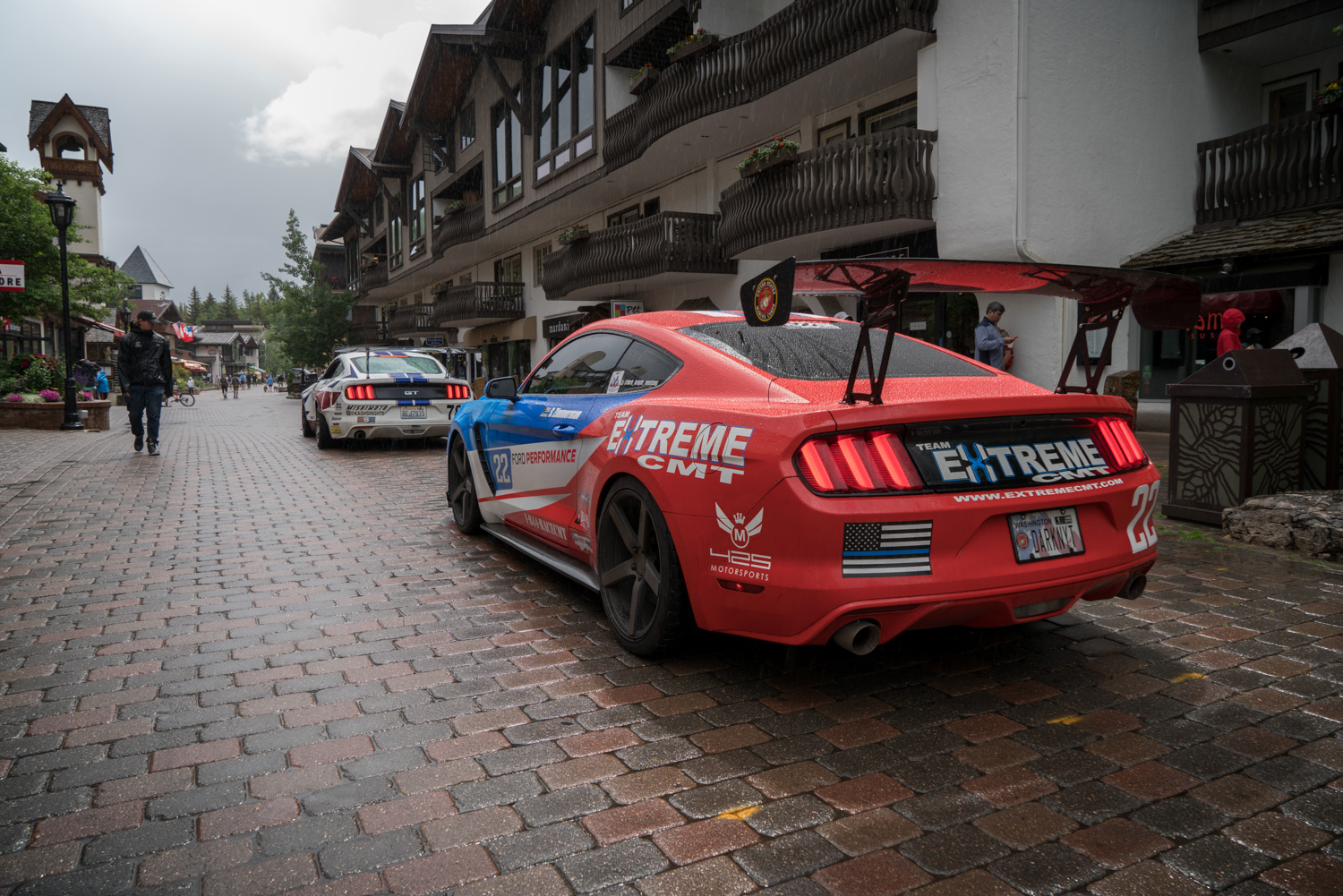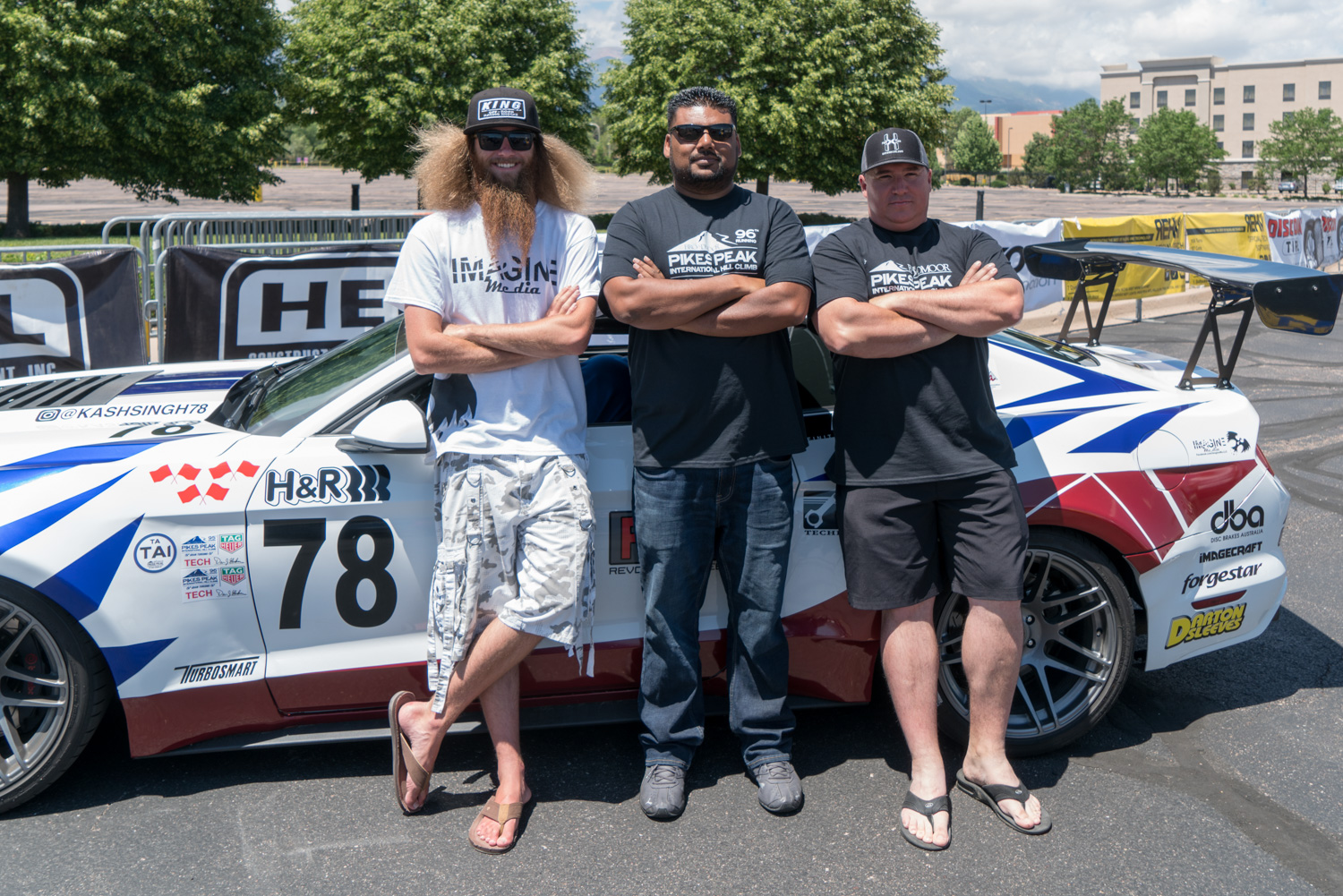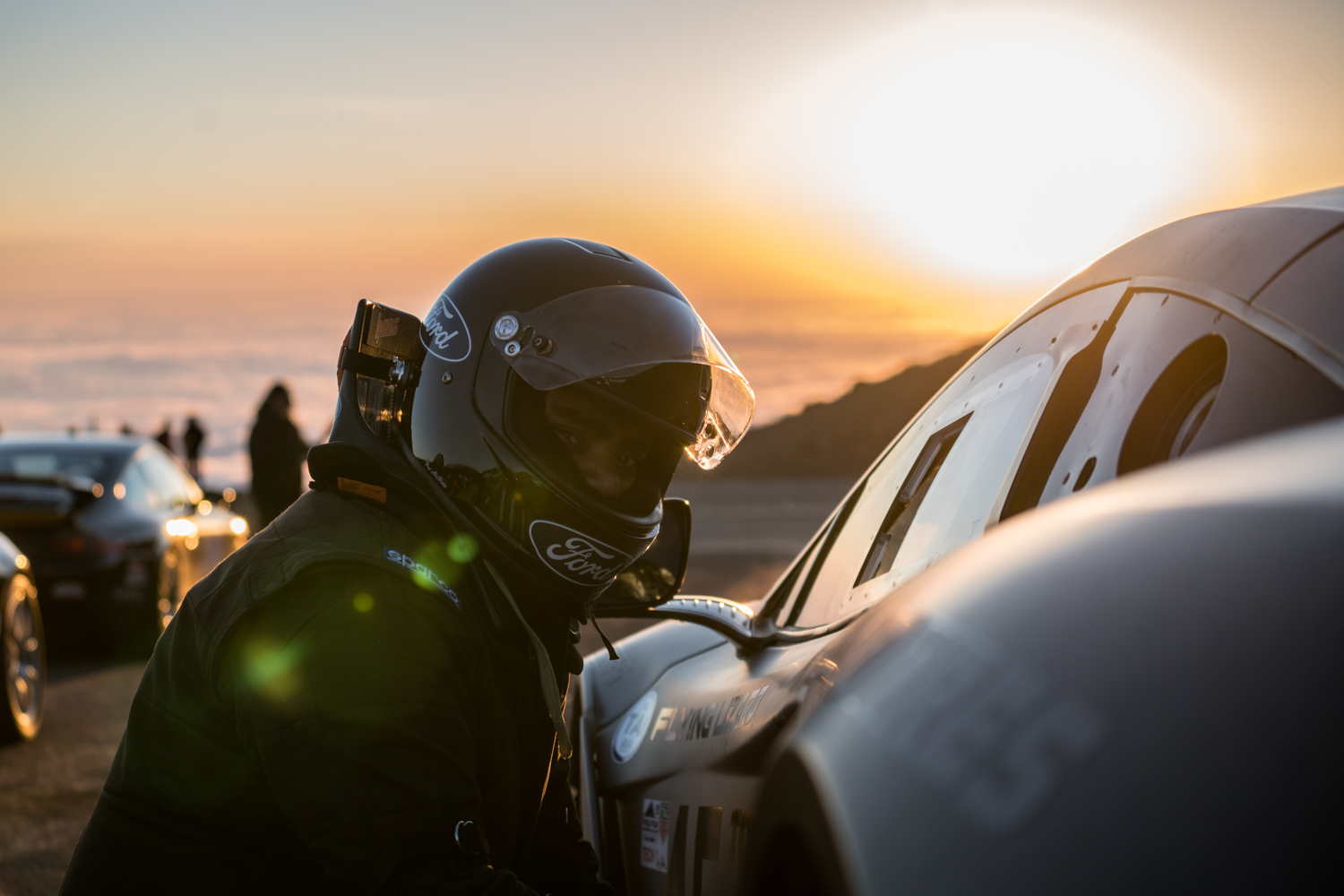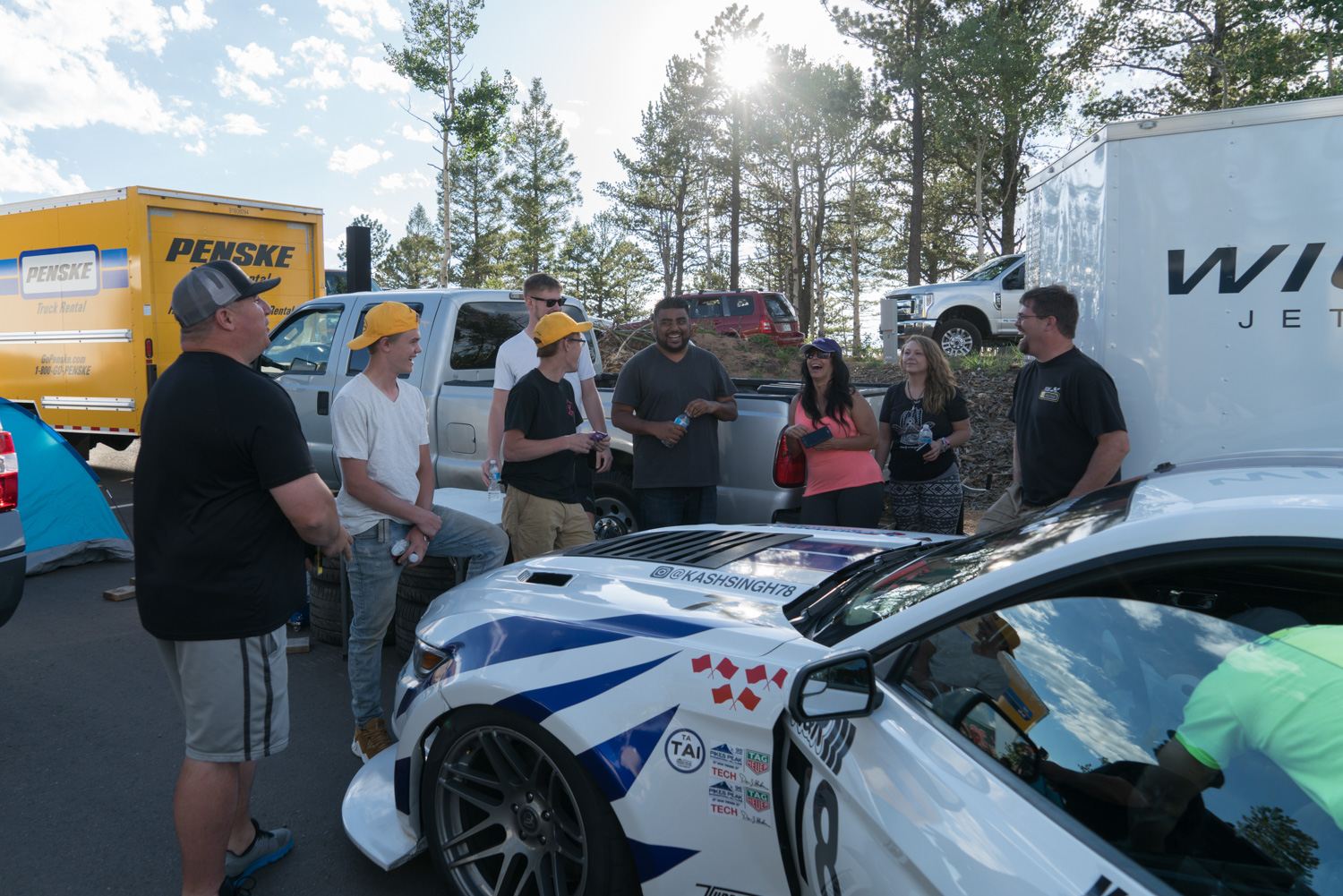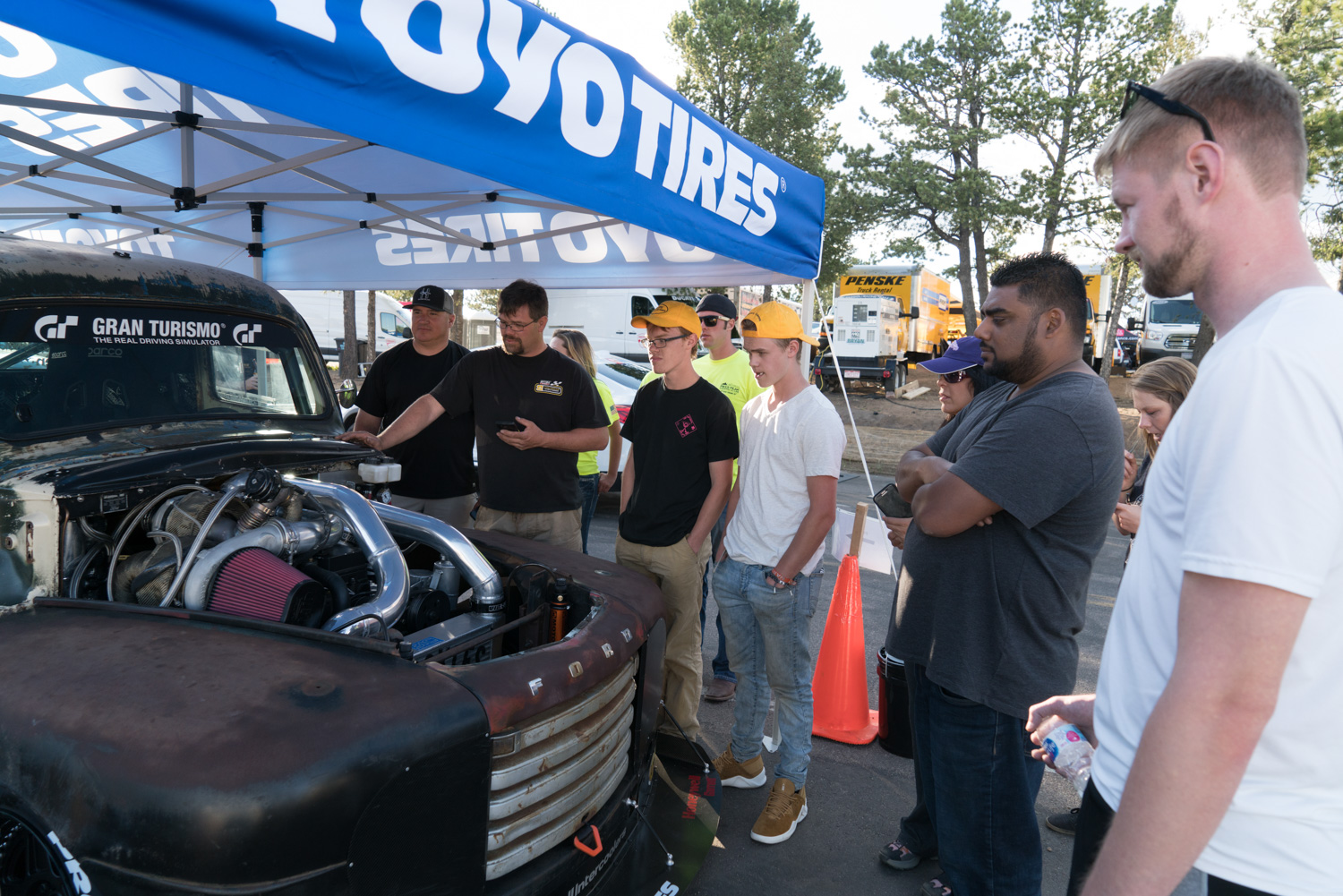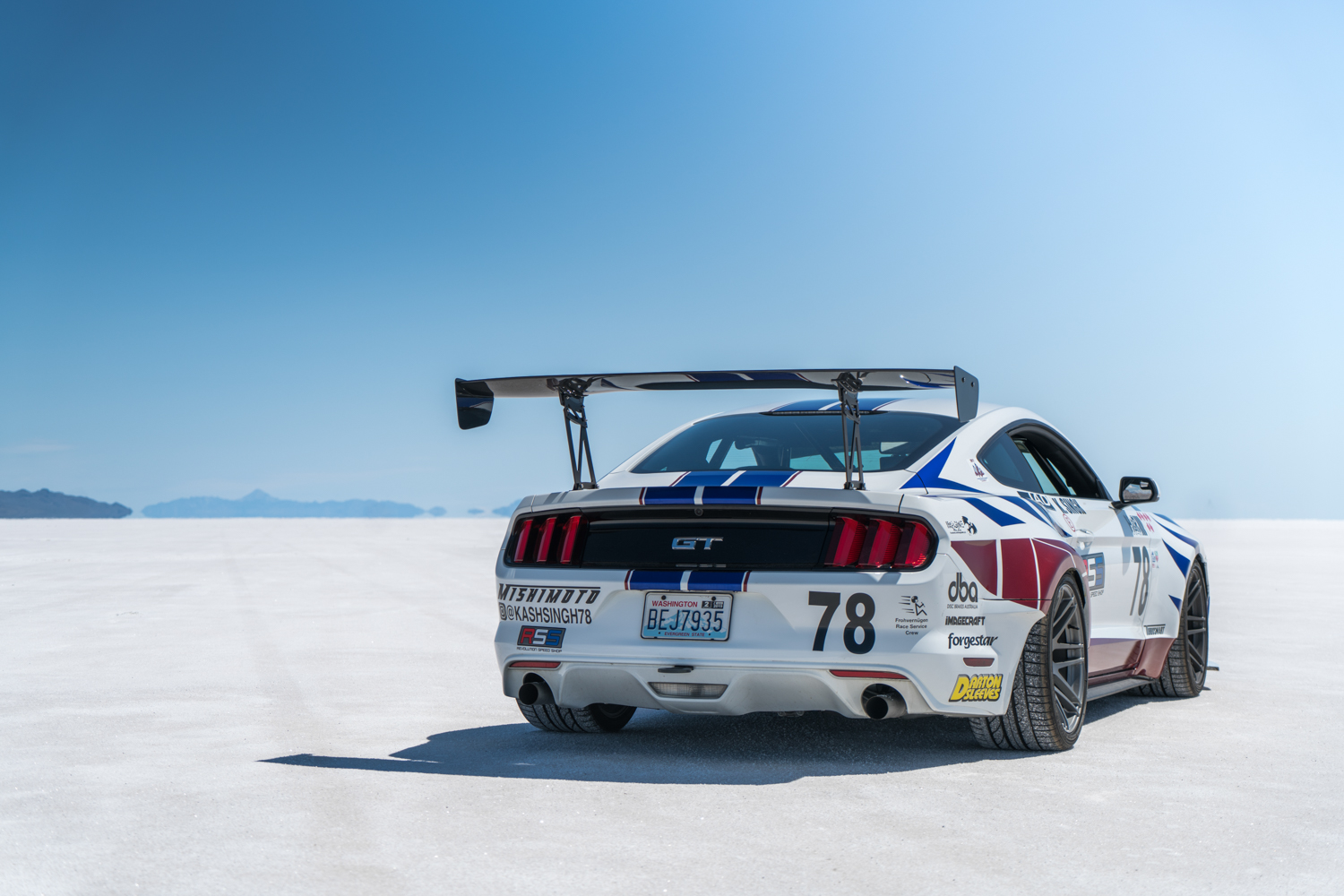Pikes Peak or bust in a 1000-hp Mustang
Only three weeks before Kashmeer Singh, aka Kash, was to drive 1400 miles from Seattle to Colorado Springs to compete in the 96th Pikes Peak International Hill Climb, his wide-bodied, twin-turbocharged, 1000-horsepower 2017 Ford Mustang GT race car blew up. Considering Kash’s past struggles at Pikes Peak, it wasn’t a surprise.
Kash, a Ford customer service zone manager who oversees the Seattle area, grew up in Southern California and first raced at Pikes Peak in 2011. That year, while on the dirt, he overcooked a corner in his Shelby Mustang, recovered, then overheated a mile and a half from the summit. He returned the next year only to have the Shelby fall into limp mode, although he managed to push it across the finish line. In Kash’s third year, he made it to the finish without any drama—no easy feat, especially given the peculiarities of the mountain’s weather.
In eight years at Pikes Peak, only three times has he crossed the finish line. Every year he has experienced a different set of dramatics, be it bad weather or vehicular malady.

Three times he drove his race car directly to the event, taking the “run what you brung” ethos to cross-continental extremes. From Seattle, you take I-84 most of the way down, switch to 80 East to Salt Lake City, then 25 at Fort Collins. Average time is 21 hours. On previous trips, Kash says he “ended up doing a Cannonball run overnight, 20 hours straight.” But 2018 would be different, since he would be making the drive with his friend, photographer Devon Dobson (whose nickname, “Afro Thunder,” is understandable if you ever saw him in a crowd). “With Devon coming, I elected to not kill myself,” Kash says. “We enjoyed the trip and did more sightseeing this year.”
Of course, that was after the two were forced to rebuild the Mustang GT’s race engine. Kash says that on that disastrous June evening, he had been sorting out some tuning issues when the 5.0-liter Coyote V-8 protested and threw a piston. “We melted a motor one week and spent the next week melting a credit card to put the car back together,” Kash says.
Pikes Peak

The race course at Pikes Peak starts at 4720 feet and climbs a dizzying 14,115 feet over 12.42 miles of sinewy, off-camber pavement. There are 156 corners to navigate and memorize: fast sweepers through the forest to hairpins above the treeline and then stretches of wide-open road, nearly a straight shot to the summit, where the fastest of cars can catch air at 130 mph. It is the last rugged race track: thousand-foot drops, hardly any guardrails, stomach-churning sections where you can’t see the edge, climbing and climbing as if into the very sky itself.
And despite its status on the international stage, Pikes Peak hillclimb is very much one of the last old-school races, with a camaraderie in the open pits unlike any other professional event. Teams show up at 3 a.m. with U-Haul trailers and tents, set up shop next to each other, share coffee and wrenches and stories. Fans stroll through the pits, practically hovering over crew members making last-minute adjustments. And after practice, on the Friday before race weekend, the city of Colorado Springs shuts down a good four blocks for a party. Racers park their cars along the street. Music blares. Open-container laws are violated. Travis Pastrana hits some sick jumps on a dirtbike.
That’s not to say then event hasn’t changed. Nowadays, the entry fee is $1500, too much for just any weekend racer to have a go. “You’ll spend that much on your crew’s drink tab,” a tour guide explains. Gone are the days in the 1970s when 300 motorcyclists could take off from the start line simultaneously, in one swirling miasma of chaos. The governing body issues invitations to a select few who carry a resume of FIA- or AMA-approved finishes: no more “bucket list” racers, few up-and-coming locals.


Some of these locals—like, say, the Unser family—have chafed at the rally champions from France, driving hyper-frenetic German cars, setting records here since the ’80s—including this year, when Romain Dumas toppled fellow Frenchman Sebastian Loeb’s overall record by 16 seconds, in an all-electric Volkswagen prototype.
And yet, Dumas set his record just a few moments before a wildly diverse field of entries—ranging from Rhys Millen’s Bentley Bentayga, to a Nissan Leaf, to a phalanx of Caymans, an 850-horsepower 1936 Chevrolet driven by Ray Evernham, to a certain wide-bodied Mustang that carries the scars and dents of previous attempts—take the start line in their attempts to summit Pikes Peak. If only he could rebuild a race car in three weeks, drive it to a race 1400 miles away, and then drive it up 14,115 feet.
Getting there is half the fun

Dobson first met Kash around 2012, when he was photographing the race. Kash is naturally charismatic and perpetually optimistic, and he seemingly makes friends with everyone in the pits. This year, Dobson flew from his home in Colorado to Seattle to join Kash for the drive. His friendship turned out to be a lifeline for Kash, who was, in Dobson’s words, “losing his mind.”
Here was the schedule that Kash had outlined: the race was June 24, and he wanted to be in Colorado a week before that, on Sunday, to rest and give himself time to mentally prepare for the race. Ideally, this meant leaving on Friday, June 15. After melting many a credit card, the Mustang fired up on Wednesday night, June 13. There was no time Thursday to break in the engine. “I’m driving it up and down Seattle traffic to break it in,” Kash recalls. “Friday we throw everything into the car and take off. It was either do or die at that point.”
Two days of driving, by Kash’s standards, was plenty generous. So what is it like to drive a race car nonstop for two days?
“I’m used to it,” Kash says.
“I got used to it,” Dobson counters.


Kash retained the Mustang GT’s factory Recaro seats, as well as its door panels and air conditioning—a gentleman’s racer at its finest, he says. One night, outside of Twin Falls, Idaho, having failed to find a hotel, Kash and Dobson slept in the car. “It’s a race car,” Dobson says, “but it’s not that bad.”
The two crossed the Cascades, following the mountain roads. In Idaho, they witnessed a forest fire alongside the freeway, driving past it just before firefighters shut down the road. At the Bonneville Salt Flats, Kash and Dobson did an impromptu photo shoot with some of Kash’s model friends and soon found themselves surrounded by dozens of tourists, drawn to the race car, the women in pumps, or the giant American flag—or maybe all of the above. Kids hung their heads out of windows, staring; people took pictures on the highway. At gas stations, the two found no shortage of questions to answer. In Vail, they were told not to drive across the little Swiss village. (“”Guys, driving in here is frowned upon,” a staff member told Dobson. “But awesome car!”)
Kash and Dobson rolled into Colorado Springs on Sunday, June 17, right on schedule. All 1000 horsepower had performed admirably, up to that point anyway. “It’s the draw of the open road,” Kash says. “And what better to do it than in an old race car?”
Hail, no!
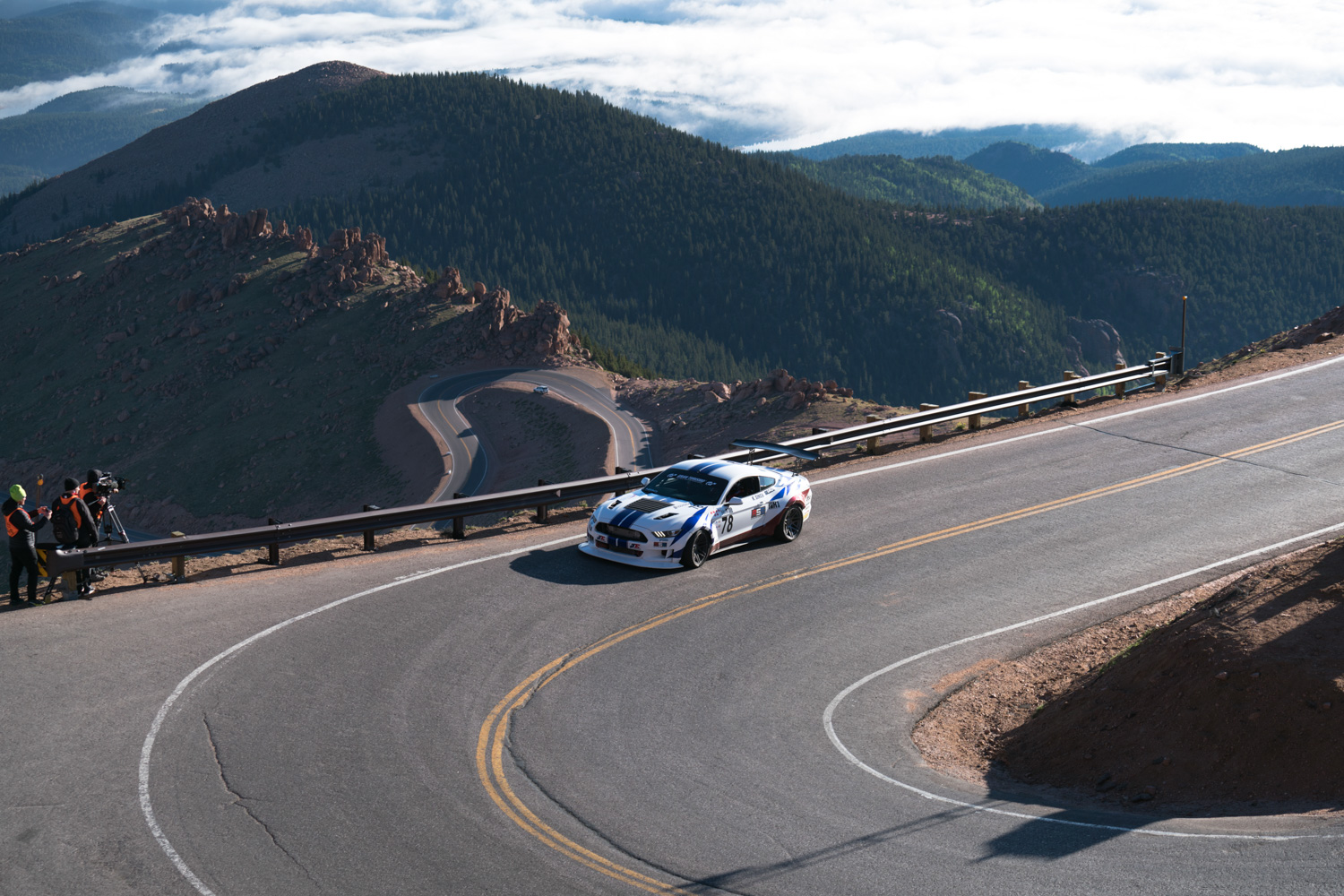
The next few days were made up of equal parts driving seriously and blowing off steam: blasting music after practice runs, dancing, hanging out with Pastrana, and foot racing other drivers in full race gear, a sweat-inducing feat of strength, at any altitude. One morning, Kash warmed a pair of breakfast burritos on his engine.
On the day of the race, around noon, the weather took a turn for the worse. Hours earlier, Dumas had smashed the electric vehicle record, and the atmosphere across the pits was buoyant, spurred by champagne-toasting Germans. Earlier, a motorcycle had gone off, but the rider was fine. Kash scrambled to get the proper tires onto the GT. Had the weather cooperated, the joke around the pits was, he says, “Done by two, back at the pool.”
Instead, the day dragged on. Nervous officials began to release cars off the starting line every seven minutes instead of the customary three. With the gathering storm clouds, officials ended the race at the halfway mark so it ended near the historic Glen Cove Inn. By the time the Mustang lined up, hail rolled in.
Kash was disappointed, but understood the call. His fellow drivers, those who hadn’t yet gone up, the grassroots racers, the amateurs who still get their invite—they were all in the same boat.


“I showed up knowing three people,” he says. “Now I say we know about a thousand people, and at fan fest we stood before 40,000 people. In the past whenever I’ve had issues, Devon has run through the pits looking for gas and people have offered it up. Whenever anyone crashes we help out. All the turmoil that’s going on, Pikes Peak is truly a family event. Everyone’s there to help.”
No doubt Kash and Dobson will be back again next year, hoping the weather holds out and the car holds out, knowing full well that you only get one chance. Either way, shenanigans will ensue.
“We’re the misfit bandit crew at the mountain,” Kash says. “If you want to be in our crew, you can’t be married and happy. You have to have some light turmoil and want to enjoy the week. It’s our band of misfits—anyone who’s going through some life issues, we’re inviting them.”
Hell, yeah. Sign me up.

